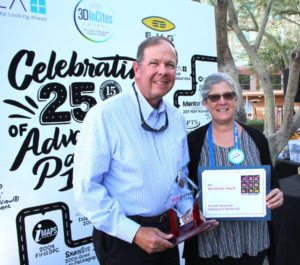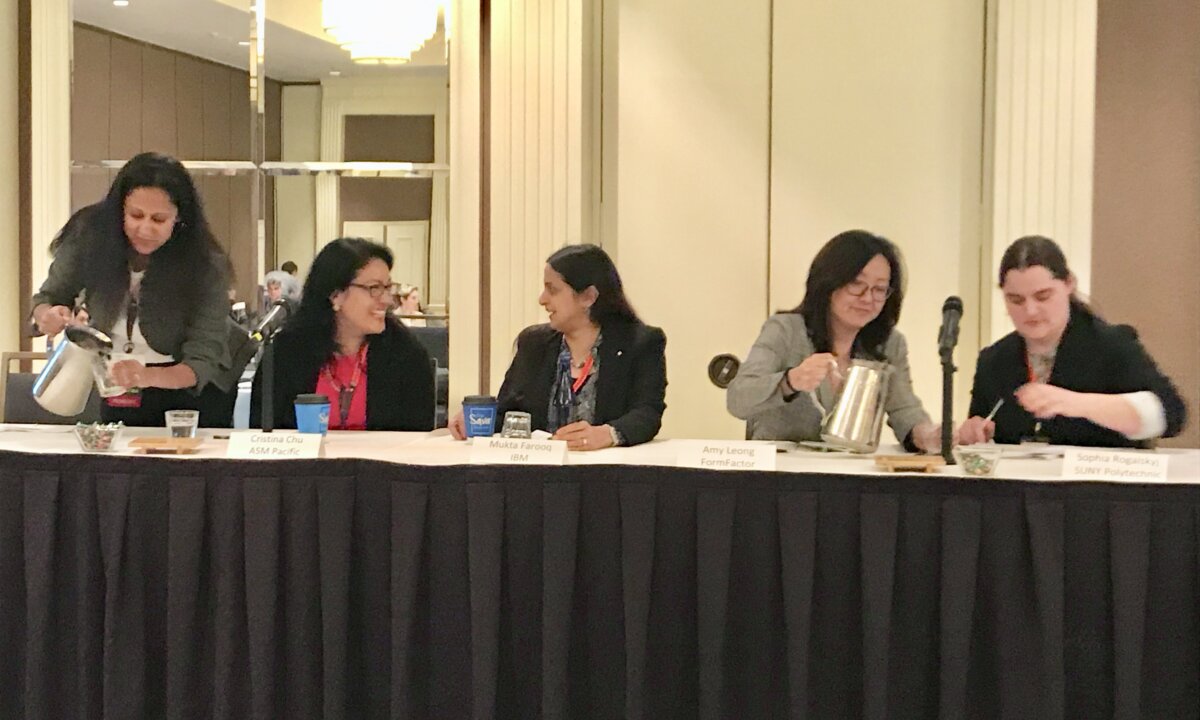“Don’t surround yourself with yourself …” Yes, from I’ve Seen All Good People.
“At Japan’s Most Elite University, Just 1 in 5 Students Is a Woman.” The New York Times, 08 December 2019
“The semiconductor industry isn’t known as a standout example of diversity and inclusion. But that’s changing.” Jane Evans-Ryan, Genuity Communications.
It’s been more than forty years since I earned my degree in chemical engineering from Cornell University, and my professional career in the semiconductor device manufacturing and packaging industries now spans five decades, starting with me as a newbie process engineer in an early Intel 4” wafer fab, and continuing, to this day, writing this piece for you.
And my perspective on Japan — having lived and worked there starting in 1984, and with a family member, my daughter, currently on an ex-pat assignment as an operations manager for Netflix in Tokyo — has been informed by almost as many years as my semiconductor industry tenure.
Gender diversity, parity, and inclusion in professional organizations (and in academia), or lack thereof, has been much studied. McKinsey&Company, for example, issued an update to their “Delivering Through Diversity” report in January 2018; McKinsey’s conclusions about Inclusion and Diversity (I&D) are these:
- The relationship between diversity and business performance persists: The statistically significant correlation between a more diverse leadership team and financial outperformance demonstrated three years ago continues to hold true on an updated, enlarged, and global data set.
- Leadership roles matter: Companies in the top-quartile for gender diversity on executive teams were 21% more likely to outperform on profitability and 27% more likely to have superior value creation.
- It’s not just gender: Companies in the top-quartile for ethnic/cultural diversity on executive teams were 33% more likely to have industry-leading profitability. That this relationship continues to be strong suggests that inclusion of highly diverse individuals — and the myriad ways in which diversity exists beyond gender (e.g., LGBTQ+, age/generation, international experience) — can be a key differentiator among companies.
- There is a penalty for opting out: The penalty for bottom-quartile performance on diversity persists. Overall, companies in the bottom quartile for both gender and ethnic/cultural diversity were 29% less likely to achieve above-average profitability than were all other companies in our data set. In short, not only were they not leading, they were lagging.
Source: “Delivering through Diversity,” McKinsey&Company, January 2018, retrieved from https://tinyurl.com/y86q92s8
The McKinsey study on the business impact of inclusion and diversity presents clear and compelling conclusions favoring increased diversity as a must-achieve top objective for any business striving for competitive advantage.
Yet I&D progress, overall, has been slow.
I can’t really address the question about why I&D ‘inertia’, if you will, exists, although the obvious answer suggests itself.
Rather, in this perspective of mine for 2020, let’s consider what we as an industry are actively doing about inclusion and diversity, doing it because we’re smart, doing it because we think improving our industry I&D quotient will improve competitive advantage at the enterprise level, and doing it because, frankly speaking, it’s absolutely the right thing to do.
Consider SemiSisters. Kudos to Françoise von Trapp, for looking toward the future from the year 2013 in the post: “SemiSisters: Factoring in the X.”
“Regardless of our profession — whether we are engineers, scientists, technologists, market analysts, or executives; or came to the industry as marketing, journalism, and PR professionals — what ties us together is the understanding that there’s something significant about being a woman immersed in the male-dominated semiconductor industry.”
From those 2013 beginnings, 3D InCites/SemiSisters has profiled and promoted the work of an outstanding array of female scientist and engineers, including Dr. Mary Jane Irwin, Department of Computer Science and Engineering at Pennsylvania State University; Dr. Lena Nicolaides, KLA; Rozalia Beica; Dr. Maaike M. Visser, Disruptive Technologies AS; Jessica Gomez, Rogue Valley Microdevices; and, in this year’s issue of The Yearbook, Severine Cheramy, CEA-Leti.
Excellent role models all.
Consider the SEMI Women in Semiconductors program, now one of the highlights of the SEMI Advanced Manufacturing Conference week. As Amy Leong, FormFactor, reported from WiS 2019 via 3D InCites, “Now in its 4th year, more than 140 attendees were at this event, up from about 60 attendees four years ago. Titled ‘Building Your Network — Crucial Connections,’ the WiS panel explored the vital role networking plays in the success of women throughout various stages of their careers, as they pursue opportunities and overcome challenges.”
Christina Chu, Energetiq, adds about SEMI WiS 2019 “Companies that recognize their top-performing female employees as leaders provide examples to the whole world of how women lead in their industries. Employees see what a female leader ‘looks like’ and women at the company have role models.”
And do companies provide recognition solely based on altruistic motivations? Maybe, but then there’s also the call of competitive advantage, because “having more women in the labor force easily translates to increased profits.”
Congratulations to Margaret Kindling and her colleagues at SEMI for the I&D spotlight at WiS/ASMC, at the various SEMICONs of the world, and for both talking the talk and for actually walking the walk — even in Japan.
Consider E. Jan Vardaman, TechSearch International, and the committed effort she and her colleagues have made establishing the IEEE Frances B. Hugle Engineering Scholarship, which honors the memory of Frances B. Hugle and her many significant engineering accomplishments. Frances co-founded Hugle Industries, Siliconix, Stewart Warner Microcircuits, Inc., and Opto-Electronics Devices, Inc.; in each of these companies, she served as a director of R&D and as chief engineer. She held 16 known patents in the field of electronics and was one of the pioneers in the invention of tape automated bonding (TAB).
May the scholarship provide the resources for many more female engineers to follow in Frances’ footsteps, including the 2019 award recipient, Caitlyn Patton.
And consider please the Cornell University College of Engineering.
Why?
Well, when I think back to my first week of freshman year at Cornell Engineering I remember the famous session, seated in a large lecture hall, where we were asked to turn right and look, turn left and look, and then to consider that by the time graduation rolled around one of those two people, Mr. Right, or Mr. Left (they were almost exclusively misters), would be gone. (Of course, it wouldn’t be you gone … or would it?)
What about Cornell Engineering today? I’m sure it’s still a challenging program, and the incoming students are so much more accomplished than I was going in, but, in terms of diversity and parity (or equity), it’s been a sea change in Ithaca.
Per Cornell, “With the arrival of the Class of 2022, the Cornell University College of Engineering now enrolls equal numbers of undergraduate women and men — the first engineering school of its size and stature to achieve this milestone. Particular gains have been made in computer science, where female students once comprised a fraction of the department. Achieving gender equity at the College of Engineering was decades in the making, a product of advocacy at the university’s highest levels.”
Achieving gender equity at the Cornell College of Engineering was literally decades in the making. Imagine the effort. Applaud the result. I do.
Others as well: And the inaugural SemiSister Award goes to … Cornell University College of Engineering.
 Announcing the award in March 2019, Françoise von Trapp wrote: “New this year, as part of our SemiSister Project, we established the 3D InCites SemiSister Award, to recognize organizations, companies or individuals who are doing the most to foster gender diversity and inclusion in the semiconductor workplace. To me, this may be the most important recognition this year, as industry-wide awareness grows around this issue. The four nominees included Cornell University College of Engineering, FRT- The art of metrology, Brewer Science, SPTS Technologies, and Leslie Tugman, representing SEMI. … This year’s winner by 3280 votes is Cornell University College of Engineering for reaching parity in women to men in its engineering program with the enrollment of the class of 2022. These students are our future.”
Announcing the award in March 2019, Françoise von Trapp wrote: “New this year, as part of our SemiSister Project, we established the 3D InCites SemiSister Award, to recognize organizations, companies or individuals who are doing the most to foster gender diversity and inclusion in the semiconductor workplace. To me, this may be the most important recognition this year, as industry-wide awareness grows around this issue. The four nominees included Cornell University College of Engineering, FRT- The art of metrology, Brewer Science, SPTS Technologies, and Leslie Tugman, representing SEMI. … This year’s winner by 3280 votes is Cornell University College of Engineering for reaching parity in women to men in its engineering program with the enrollment of the class of 2022. These students are our future.”
These students are our future.
Which is why my perspective 2020 is an optimistic one.
Sure, there’s still too much inertia holding I&D back, but we-in-the-know know that continuing to improve our industry’s I&D quotient will improve competitive advantage at the enterprise level, and who doesn’t like that.
Besides, we know it’s absolutely the right thing to do on the human level. And who doesn’t support that?
Diversity, Parity, Prosperity in 2020 and beyond — will you rally with me? From Pittsburgh, PA, thanks for reading. ~PFW
A version of this post appears in the 3D InCites Yearbook. Download your copy here.



















